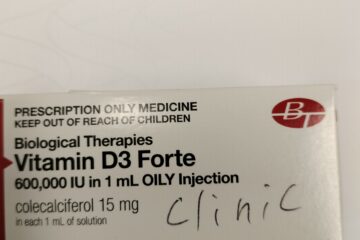Question: I am a GP looking at buying my own practice. How do I know what is the “right price”?
Answer: You are buying your GP clinic. What is the right price? Putting a price tag on a General Practice is not a simple affair. It is not the same as calculating the price on the laundry business etc. There is more than multiplying the profits involved in determining the price of a GP clinic.
This article is not financial advice. This article reflects many, many years of experience in Australian General Practice. I bought practices, I sold practices, I brokered practices, I established practices, I did CPR on practices. (I have never closed down a single practice, at least, yet.)
In my view, the starting point for the practice valuation is to determine who is buying the practice and for what reason? Big corporations buy practices to grow and reduce running costs due to existing management systems. They buy practices that have $X of revenue and $Y of expenses. They hope to improve the profitability by reducing the $Y by including the practice in their existing low-cost management structure. Apart from that, some bigger companies aspire to put their new big group of practices on the stock exchange or be profitably acquired by an even bigger group. They usually look at buying practices at 3.5-4 EBITDA or Earnings Before Interest, Taxes, Depreciation, and Amortization.
I want this article to be helpful for another type of buyer, though. I am referring to a GP who is ambitious to become a practice owner. The buying exercise aims to the following 5 baseline points:
- Purchase the practice that needs little or no development in order to achieve the objective in p. 2. The practice has an excess of clientele. Below is p. 2:
- The new GP owner would take 100% of his or her own medical earnings home while working as a GP straight away. Normally, that would happen if there is, at least, one GP there already.
- There is room for improvement in order to improve above and beyond the objective in p. 2.
- The practice has a good management structure in order not to distract the new GP owner from reaching the objective in p. 2.
- The rent for the building is substantially if not completely covered by the sub-tenants (Pathology, physio, dietitian etc.).
In this case, the price for the clinic is what you would spend achieving all of that. In order to achieve the five points above, the owner needs to invest a considerable amount of effort, time and money. While the money component of that investment is easy to calculate, the effort and time are not.
The most sensible valuation of the time and effort spent on developing the clinic is to look into what could you, as a GP, do in that time. Let’s say you work at someone’s else clinic at 70%. You bill around $300/hour, taking home around $200/hour. How many hours, days, months would you spend developing your own clinic NOT billing $300/hour? Well, the seller has done all of that for you and wants you to pay a fee – the purchase price for the clinic. The seller:
- Spent time and money purchasing the equipment, funiture, computers and all of the hundreds of items around the practice.
- Spent time finding the premises and making the leases. Most likely, renovated the premises – spending time and money.
- Spent time and money finding and training the staff.
- Spent time and money engaging doctors. Spent money to pay retainers.
The list may go on and on. How much would you miss billing as a GP doing all of that? From my experience, a GP buying a clinic with $0 income but ticking all 5 baseline points listed before, would make a good deal paying anything between $150 000 – $200 000. If the clinic that is for sale ticks 5 baseline points AND brings the profit, add 3 times profit after tax to that price and be assured you made a good deal.
More free resources for GPs here.


